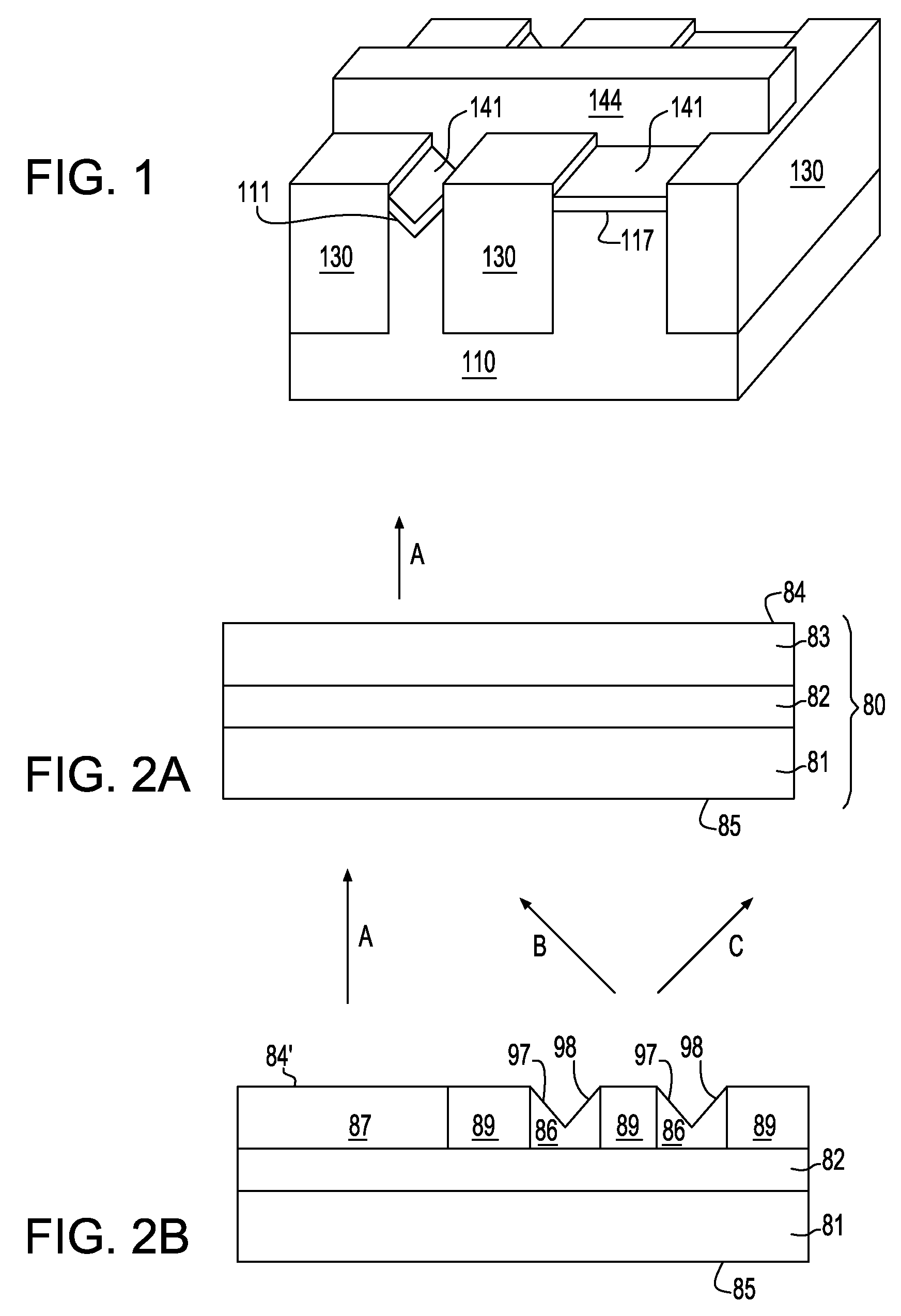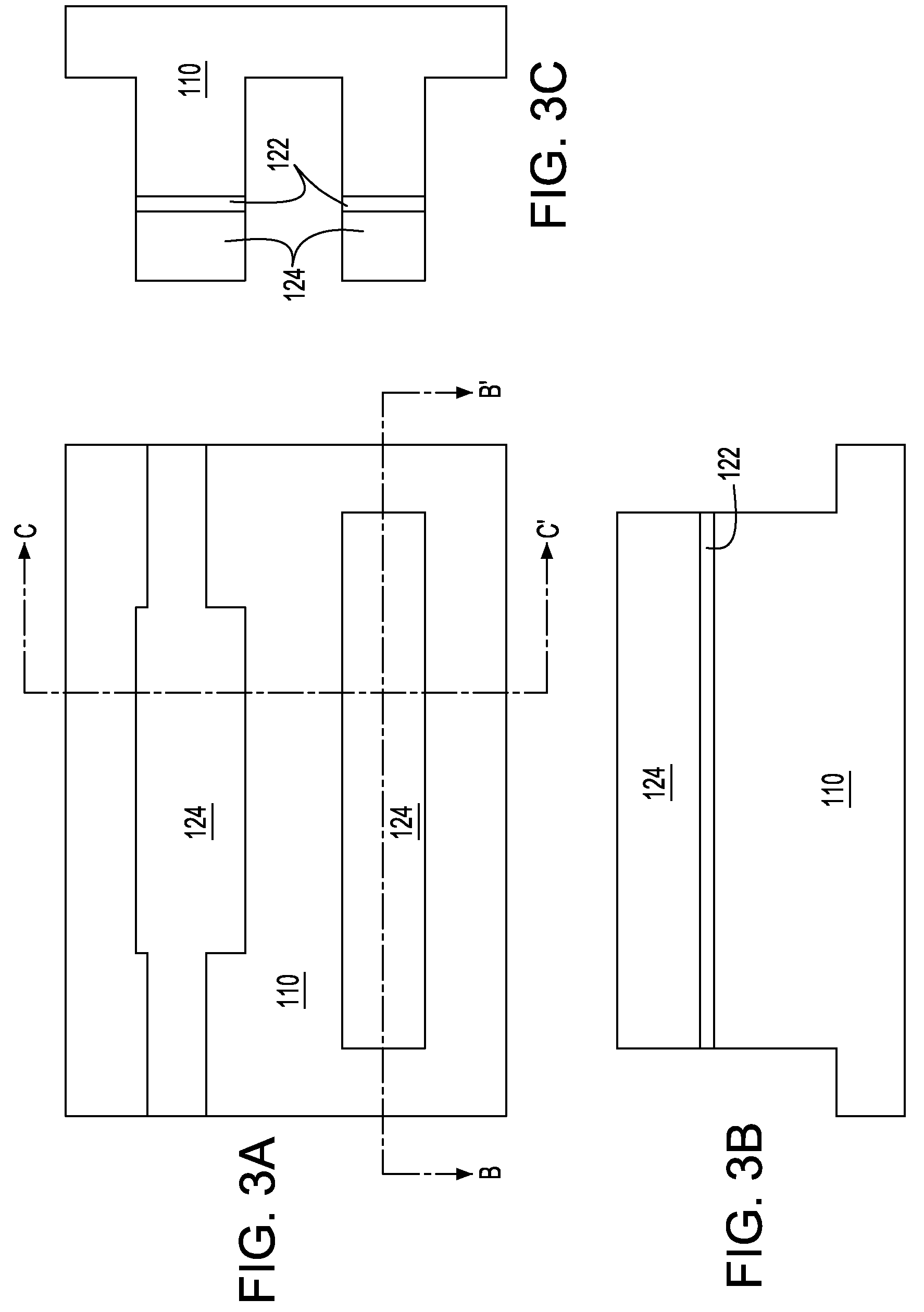Enhanced mobility CMOS transistors with a v-shaped channel with self-alignment to shallow trench isolation
a technology of cmos transistor and self-alignment, which is applied in the field of complementary metal oxide semiconductor (cmos) transistors, can solve the problems of inability to use high-performance cmos devices, propensity for epitaxy defect generation, and complex processes, and achieve the effect of improving performan
- Summary
- Abstract
- Description
- Claims
- Application Information
AI Technical Summary
Benefits of technology
Problems solved by technology
Method used
Image
Examples
first embodiment
[0051]FIG. 1 shows a bird's eye view of a portion of an exemplary SRAM structure after a gate stack etch and before removal of the gate dielectric according to the present invention. In FIG. 1, a semiconductor substrate 110, shallow trench isolation 130, a gate dielectric 141, a V-shaped groove 111 formed in a PFET region, a flat semiconductor area 117 formed in an NFET region, and a gate line 144 are shown. The purpose of this bird's eye view is to show the general structure of the present invention that comprises a V-shaped groove formed by two crystallographic facets meeting at or around the middle of the semiconductor area and a channel formed adjacent to and beneath the V-shaped groove such that the direction of the current flow is in the direction of the ridge formed by the two adjoining crystallographic facets.
[0052]Before describing the present invention in further detail, definitions of terms used in this disclosure are presented herein.
[0053]The term “substrate orientation...
second embodiment
[0075]According to the present invention, identical processing steps are employed up to the lithographic patterning of shallow trench isolation (STI) and an STI etch as shown in FIGS. 3A-3C. Preferably, during the deposition of the pad nitride 124, however, a thicker pad nitride layer is deposited. The same STI fill process is used to fill the STI regions with STI material 130.
[0076]The substrate is planarized with chemical mechanical polishing (CMP) after the STI regions are filled with STI material 130. In a preferred version of the second embodiment of the present invention, however, the residual pad nitride 124′ is thicker than that in the first embodiment so that after the planarization. The surface of the pad oxide 122 is at this point recessed by the thickness of the residual pad nitride 124′ at the end of the CMP step as shown in FIGS. 9A-9C.
[0077]The residual pad nitride 124′ is removed preferably by a wet etch. An STI spacer layer 132 is deposited by blanket deposition fol...
PUM
 Login to View More
Login to View More Abstract
Description
Claims
Application Information
 Login to View More
Login to View More - R&D
- Intellectual Property
- Life Sciences
- Materials
- Tech Scout
- Unparalleled Data Quality
- Higher Quality Content
- 60% Fewer Hallucinations
Browse by: Latest US Patents, China's latest patents, Technical Efficacy Thesaurus, Application Domain, Technology Topic, Popular Technical Reports.
© 2025 PatSnap. All rights reserved.Legal|Privacy policy|Modern Slavery Act Transparency Statement|Sitemap|About US| Contact US: help@patsnap.com



